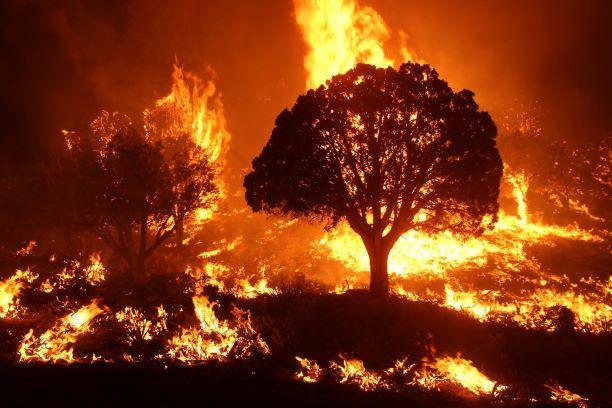Wildfire Fighter Labor

One of the only times the major American media talks about the rural West is during wildfire season, which has been sadly active this year. One question that rarely gets asked is who actually does this work? I’ve known a few firefighters over the years and it’s brutally tough work in harsh terrain under tough conditions. It does appeal to a certain kind of person. But as it turns out, the Guardian actually decided to pay attention to these workers and it turns out there is a lot of discontent in this labor force.
Firefighters are feeling the strain of another long and intense season, with months to go before the highest risks subside. But as they battle the flames, the thousands of people working for the US Forest Service (USFS), the largest federal employer of firefighters, are also fighting for changes within the agency to tackle issues they say have made the work even harder.
Federal firefighters have been waiting for years for revisions to outdated job descriptions, which have forced them to do more for less. Many have opted to leave altogether.
In a scathing letter sent last month to top officials at the USFS and the United States Department of Agriculture (USDA), the National Federation of Federal Employees (NFFE), the union that represents federal wildland firefighters, accused the agency of decades of wage theft and job misclassification.
The issue is among many – from a stalled pay raise to short staffing and escalating job hazards – that have contributed to severe burnout and struggles with recruitment and retention, just as fires become more difficult – and more dangerous – to fight.
“We have fewer people willing to stick it out and get to the positions that pay them for the work they are already doing,” said Morgan Thomsen, a firefighter with the USFS for the last two decades who was speaking from his position as a union steward. The exodus has not only created gaps in experience, tactical planning and coverage, but has also exacerbated the exhaustion felt by firefighters still in the trenches. “Those of us who have stuck around keep getting more and more stuff piled on because everybody else is leaving.”
Like the rest of the government, neoliberalism coming from both parties has caused massive discontent. Privatization, outsourcing, subcontracting, finding easily exploited labor forces, a lack of regulation of all these new operators in the industry–all of this has contributed to a lot of anger and these workers can get regular firefighting jobs if they want. I guess we can use prisoners, and in fact we do, but that’s not going to be enough people to protect all those million dollar homes in the California and Colorado mountains.
And this turnover is crazy:
The USFS has lost nearly half of its permanent employees in the last three years, according to data reported on by ProPublica. New recruits tend to be entry-level and inexperienced, leaving the agency scrambling to fill leadership positions during the most active parts of the year.
Even though the USFS says it exceeded its hiring goals this year, thousands of key roles went unfilled as large wildfires began to rage this summer. The impact is severe, leaving firefighters, communities and landscapes at risk. “You don’t have enough people overseeing things,” Thomsen said. “The ripple effect is a huge safety concern.”


